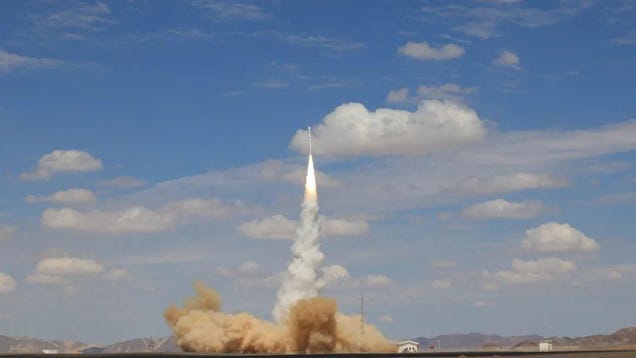It was an unfortunate week for the rocket industry, with three distinct setbacks occurring and challenging the plans of three different aerospace companies across the globe. U. S.
-based Rocket Lab, private Chinese launch provider Galactic Energy, and Europe’s Arianespace all endured face-palming disappointments this week, with two rockets failing outright and one continually unable to get off the ground. Rocket Lab’s Electron Faces Third Mission Failure Rocket Lab’s 41st mission, aptly named “We Will Never Desert You,” faced a frustrating setback as its around two and a half minutes after taking flight. The two-stage launch vehicle took off on Tuesday, September 19, at 2:55 a.
m. ET from Launch Complex 1 in New Zealand, with its primary mission to deploy a radar imaging satellite for Capella Space. After successfully executing a first-stage burn and stage separation, an unspecified issue arose, leading to the mission’s failure.
This recent event marks Electron’s third mission failure (technically four, as there was a mishap during its inaugural demo flight in 2017). The other setbacks include an engine failure in July 2020 and an upper-stage engine shutdown shortly after ignition in May 2021. Despite these setbacks, , deploying over 170 satellites to orbit.
Crucially, Rocket Lab now needs to determine the root cause of the failure and implement a fix, as the company has a batch of Electron flights to carry out in the coming months, including missions for Capella, Astroscale, Kinéis, and HawkEye 360. Galactic Energy’s Ceres-1 Suffers First Failed Launch Galactic Energy, an up-and-coming rocket startup from China, reported a mid-flight failure of its on Thursday, September 21. The launch, which took place around 1:00 a.
m. ET from the Jiuquan Satellite Launch Center, resulted in the loss of the Chang Guang Jilin-1 Gaofen-04 B satellite. This satellite is part of Chang Guang’s plan to build an extensive remote sensing commercial satellite constellation, with over 105 satellites already in orbit out of a planned 300, to Payload.
“The rocket flew abnormally and the launch mission failed,” Galactic Energy explained in a . “The specific reasons are being further analyzed and investigated. ” Prior to this setback, the four-stage Ceres-1 rocket, measuring 62 feet (19 meters) in height, had a pristine record with nine successful launches, the latest being a notable in early September.
Designed with the capability to transport 882 pounds (400 kilograms) to low Earth orbit, Ceres-1 feeds off solid propellant for its first three stages and then switches to liquid fuel, specifically hydrazine, for its final stage. Arianespace’s Ariane 6 faces further delays Arianespace’s preparations for the maiden flight of Ariane 6 in 2024 faced yet another snag this week. Engineers detected an anomaly in the thrust vector control system, leading to the postponement of a critical long-duration hot fire test, which had been slated for October 3.
This came after the on September 5. A on September 21 described issues with the hydraulic group of the thrust vector control system, which plays a pivotal role in maintaining the rocket’s altitude by adjusting the Vulcain 2. 1 engine’s position.
This glitch has temporarily suspended the core stage testing, though work on other components of the rocket remains uninterrupted. The next significant milestone, a hot fire test for the rocket’s upper stage, is supposed to happen before the end of 2023. The debut flight of Ariane 6 in early 2024 is contingent on the outcome of the pending long-duration hot fire test.
Ariane 6, the successor to Ariane 5, will enhance Europe’s heavy-lift launch system with its upper-stage restart capability tailored for multi-payload missions; Arianespace and the European Space Agency have worked together for nearly a decade to develop the Ariane 6 expendable launch system. The 197-foot-tall (60-meter) rocket will be able to lift 10 metric tons to low Earth orbit and 4. 5 metric tons to Sun-synchronous orbital (SSO) altitudes of 500 miles (800 kilometers).
Additionally, it will have the capability to transport upwards of 10. 5 metric tons to geostationary transfer orbits (GEO). Set to be available in two versions, with either two or four strap-on solid rocket boosters, the rocket’s lower stage will use the Vulcain 2.
1 engine powered by a liquid hydrogen-oxygen mix, similar to its Vinci upper stage. For Rocket Lab, Galactic Energy, and Arianespace, these setbacks underscore the inherent challenges and unpredictabilities in the rocket industry, but no one said space is easy. .
From: gizmodotech
URL: https://gizmodo.com/rocket-lab-galactic-energy-arianespace-rocket-setbacks-1850864771



